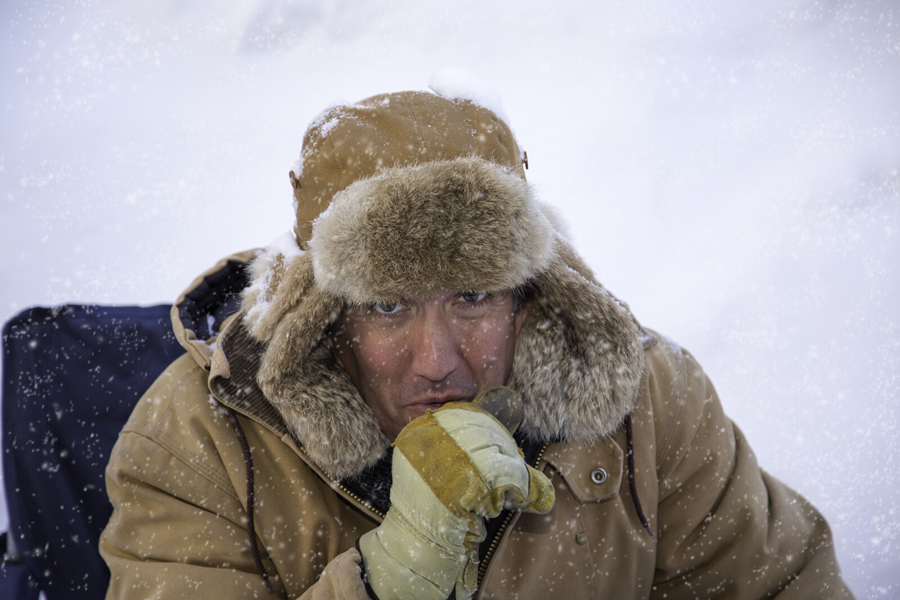
We’re in for some brutally frigid wind chill temperatures over the next few days, so if you have to be out, take extra precautions.
See the latest winter storm story here.
Extremely cold temperatures can cause both frostbite and hypothermia. The Centers for Disease Control (CDC) want to make sure you stay safe “by learning more about hypothermia and frostbite, including who is most at risk, signs and symptoms, and what to do if someone develops hypothermia or frostbite.”
Hypothermia
According to the CDC prolonged exposure to extremely cold temperatures causes hypothermia, as the body loses heat faster than it is produced.
“Lengthy exposures will eventually use up your body’s stored energy, which leads to lower body temperature,” the CDC notes.
A body temperature that is too low can inhibit the ability of the person to think clearly and move well.
“This makes hypothermia especially dangerous, because a person may not know that it’s happening and won’t be able to do anything about it,” the CDC warns.
According to the CDC, hypothermia victims often are
- Older adults with inadequate food, clothing, or heating
- Babies sleeping in cold bedrooms
- People who remain outdoors for long periods—the homeless, hikers, hunters, etc.
- People who drink alcohol or use illicit drugs
Hypothermia signs for adults include the following.
- Shivering
- Exhaustion or feeling very tired
- Confusion
- Fumbling hands
- Memory loss
- Slurred speech
- Drowsiness
For babies, hypothermia signs include the following.
- Bright red, cold skin
- Very low energy
“Hypothermia is a medical emergency. If you notice any of the above signs, take the person’s temperature. If it is below 95° F, get medical attention immediately!” the CDC warns.
If immediate medical help is not an option, the CDC says to do the following.
- Get the person into a warm room or shelter.
- Remove any wet clothing the person is wearing.
- Warm the center of the person’s body—chest, neck, head, and groin—using an electric blanket, if available. You can also use skin-to-skin contact under loose, dry layers of blankets, clothing, towels, or sheets.
- Warm drinks can help increase body temperature, but do not give alcoholic drinks. Do not try to give beverages to an unconscious person.
- After body temperature has increased, keep the person dry and wrap their body, including their head and neck, in a warm blanket.
- Get the person proper medical attention as soon as possible.
Additionally, the CDC notes that a person with severe hypothermia may be unconscious and may not appear to be breathing or have a pulse.
“In this case, handle the person gently, and get emergency assistance immediately,” the CDC encourages. “Perform CPR, even if the person appears dead. CPR should continue until the person responds or medical aid becomes available. Keep warming the person while performing CPR. In some cases, hypothermia victims who appear to be dead can be successfully resuscitated.”

Frostbite
According to the CDC, frostbite, an injury caused by freezing, “leads to a loss of feeling and color in the areas it affects, usually extremities such as the nose, ears, cheeks, chin, fingers, and toes. Frostbite can permanently damage the body, and severe cases can lead to amputation.”
Persons with poor blood circulation and those who are not properly dressed for extremely cold temperatures are at greater risk of frostbite, the CDC warns.
The CDC notes that redness or pain in any skin area could be an indication that frostbite is beginning. Other signs include the following.
- A white or grayish-yellow skin area
- Skin that feels unusually firm or waxy
- Numbness
Persons exhibiting such symptoms should get out of the cold or protect any exposed skin, however, persons who have frostbite may not know it until someone else points it out because frozen body parts are numb, the CDC warns.
The CDC encourages persons who have signs of frostbite to seek medical care. It notes that a check for hypothermia also is important as hypothermia requires emergency medical care. If someone exhibits signs of frostbite, but no signs of hypothermia and immediate medical care is not available, the following steps should be followed, however, they are not a substitute for medical care.
- Get the person into a warm room as soon as possible.
- Unless absolutely necessary, do not walk on feet or toes that show signs of frostbite—this increases the damage.
- Do not rub the frostbitten area with snow or massage it at all. This can cause more damage.
- Put the areas affected by frostbite in warm—not hot—water (the temperature should be comfortable to the touch for unaffected parts of the body).
- If warm water is not available, warm the affected area using body heat. For example, you can use the heat of an armpit to warm frostbitten fingers.
- Do not use a heating pad, heat lamp, or the heat of a stove, fireplace, or radiator for warming. Affected areas are numb and can easily burn.
The above information, minus the chart, can be found on the CDC website.